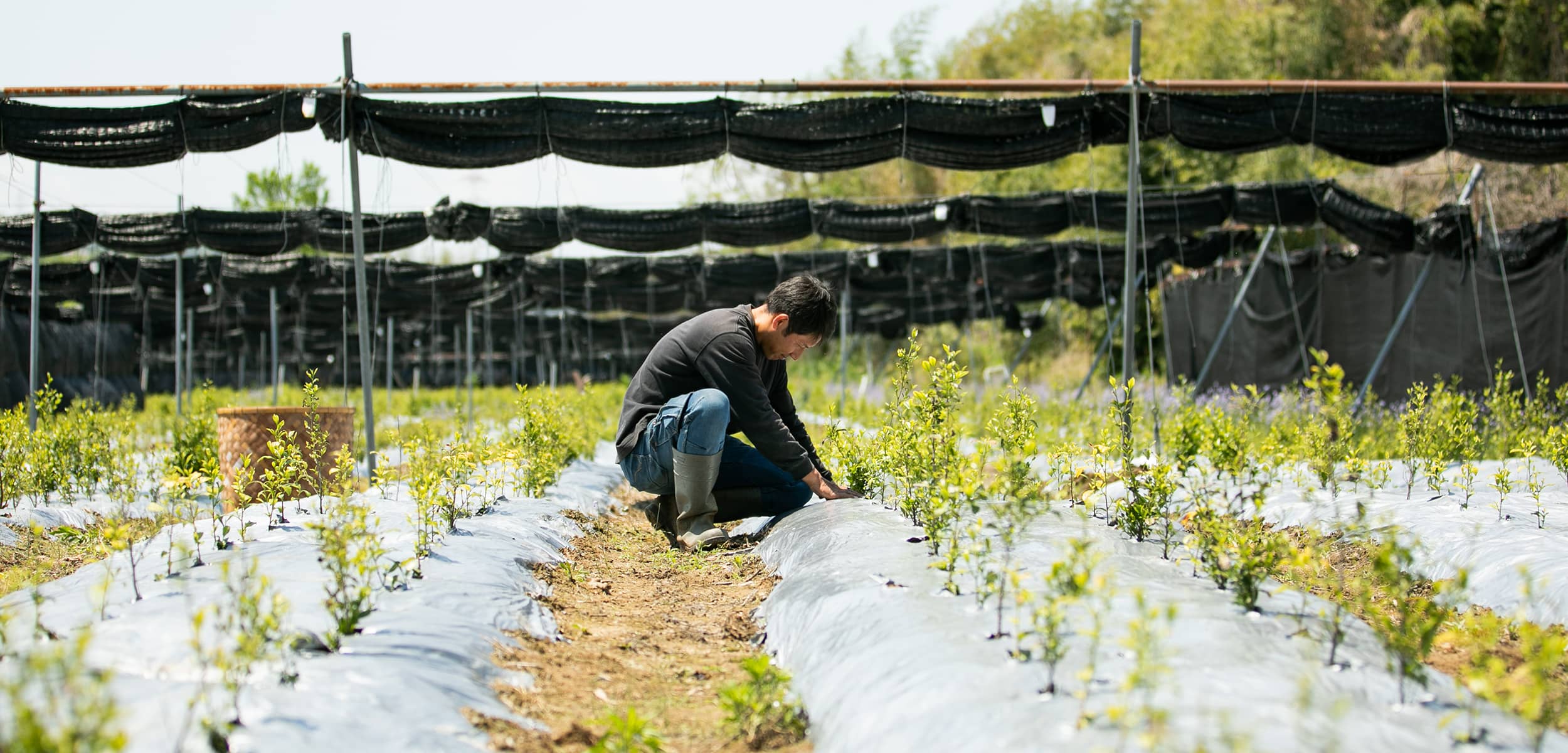我们对泡茶的看法
京都西川茶园是宇治玉露的产地 在京都南部著名的京田边接受大自然的恩惠 我们种植充满活力的茶叶。
用一块黑色的黑布叫做草坪布 通过覆盖茶园的栽培方法阻挡阳光, 茶氨酸,茶的甜味和鲜味成分 防止它变成儿茶素,一种涩味成分, 这将是一种醇厚的茶,带有强烈的甜味和鲜味。
天茶(抹茶),作为玉露之源的茶叶, 我们在用心修炼。
传承传统制茶文化, 我想小心翼翼地将它交付给尽可能多的人。
有了这种感觉,它就会在这片土地上扎根 我们还将致力于茶文化的创造。
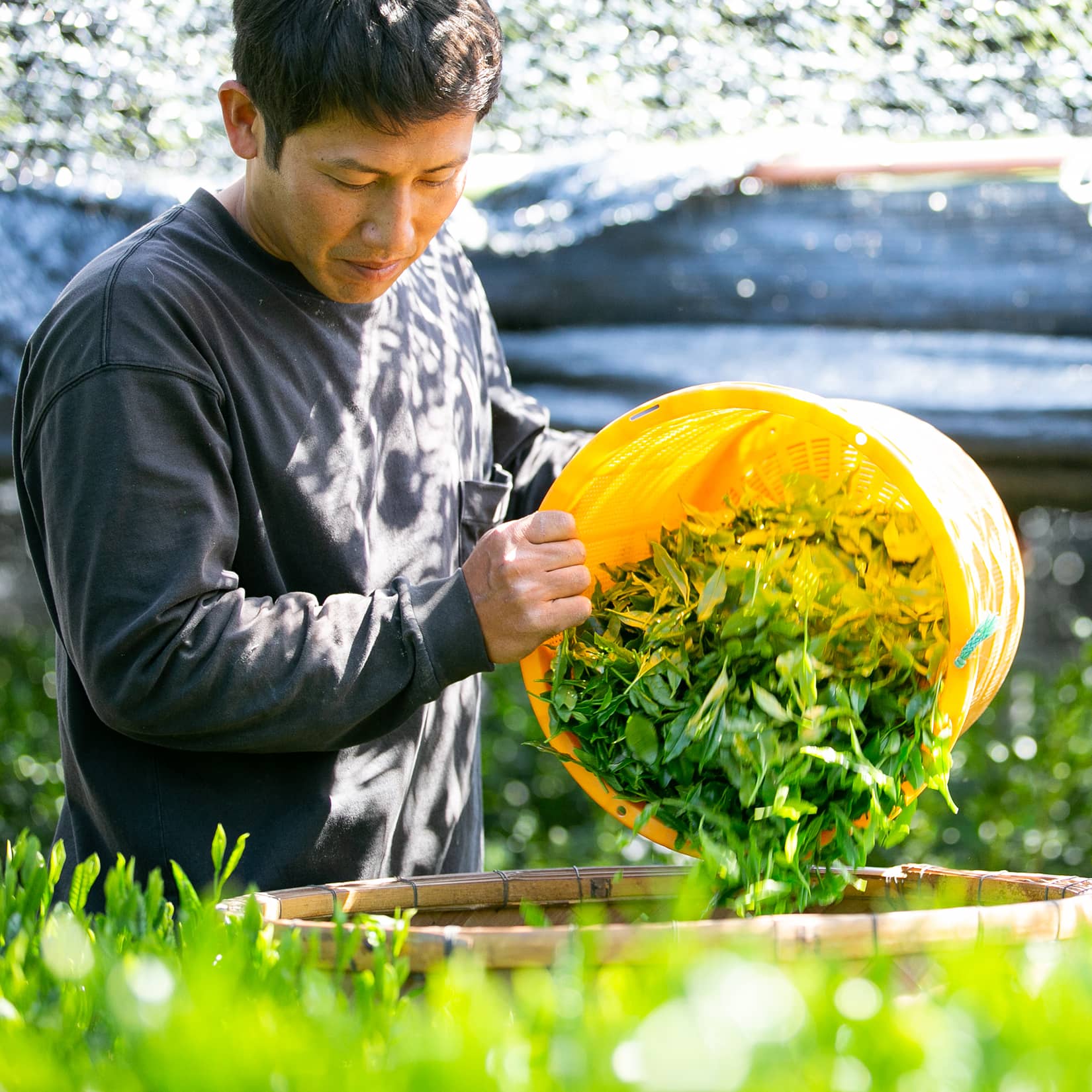
玉露
在卧底茶园,将枝条覆盖 20 天或更长时间,以长出柔软的绿色暗枝。每年在全国各产茶区举办的比赛(评审委员会)上,将一粒一粒采摘下来的茶叶展出。

天茶
将春下茶园种植的豆芽蒸熟后,避免阳光直射,直接晒干,无需揉捏,制成抹茶原料。宇治抹茶的特点是口感醇厚,自古以来就受到很多人的喜爱。
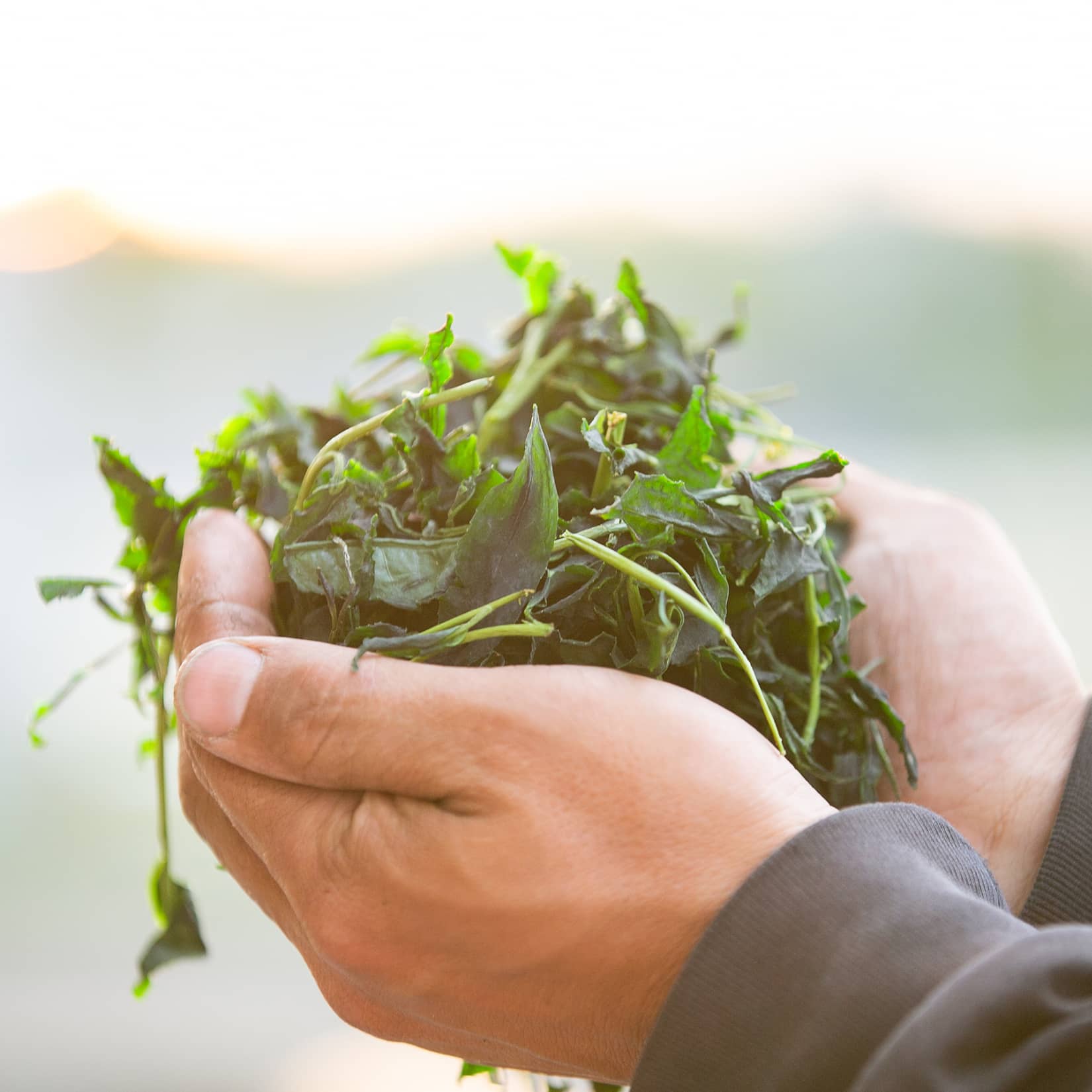
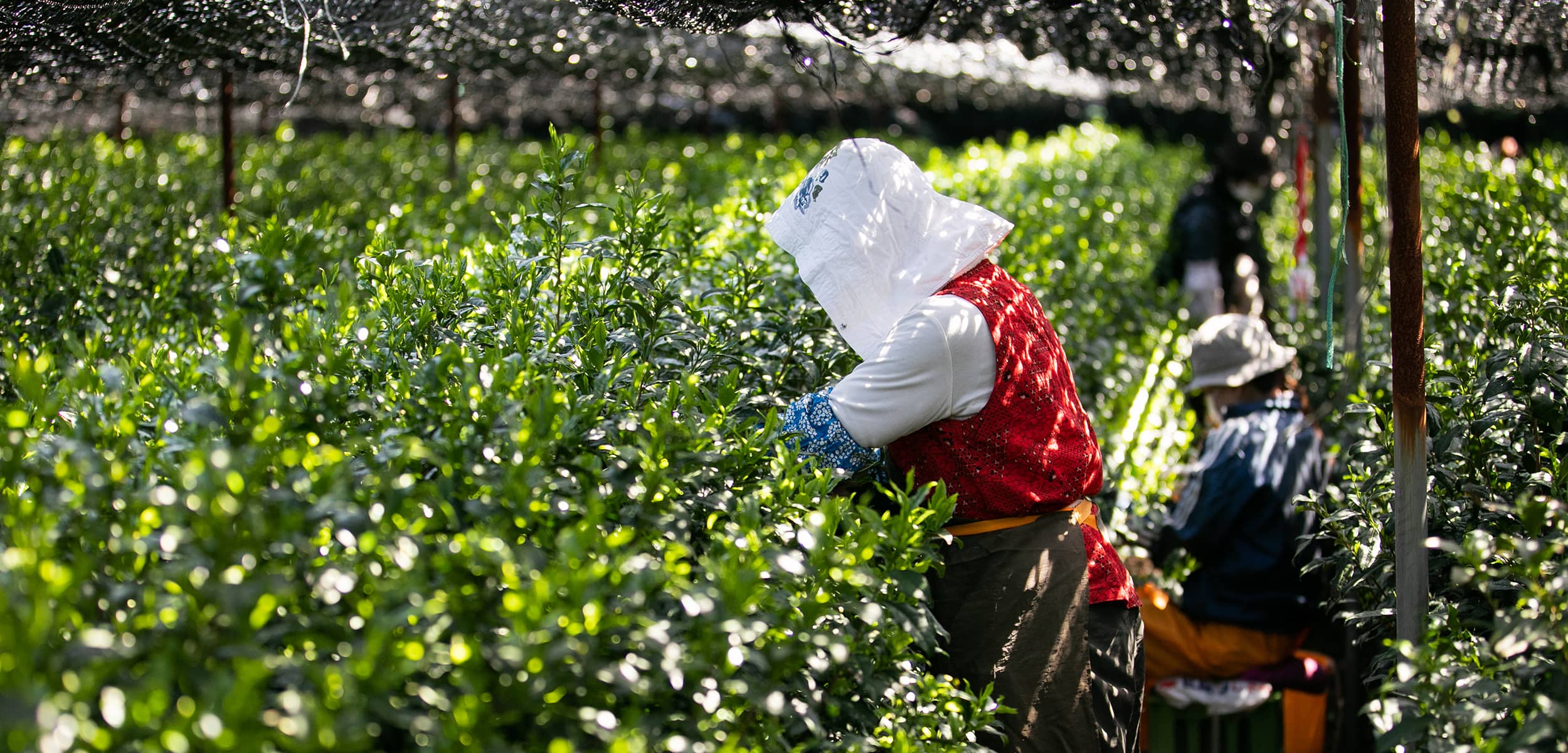
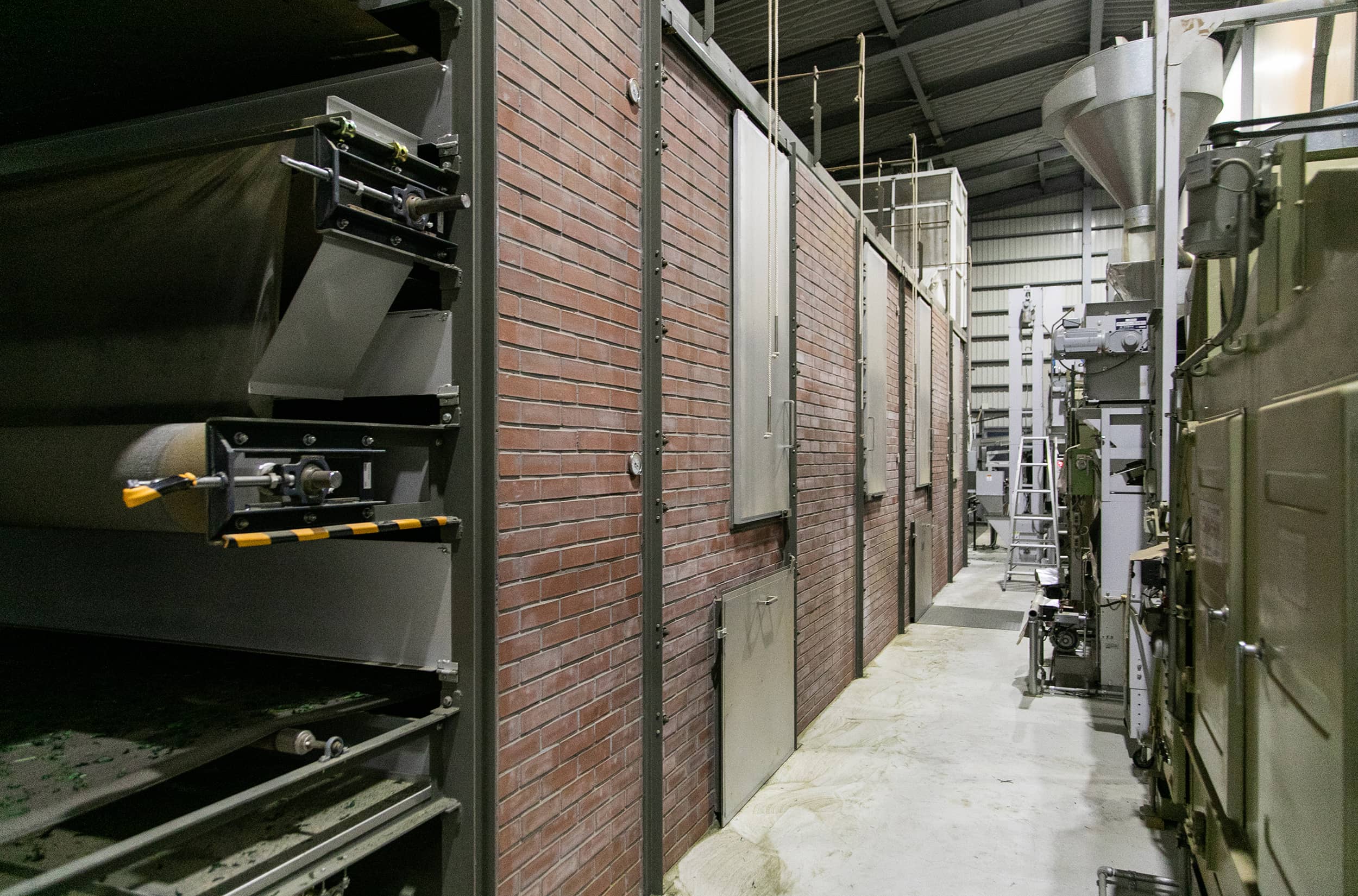
京田边天茶工厂
在以红砖为特征的“天茶炉”中,将生茶晒干转化为天茶。每年可加工约40吨茶叶。
Fresh tea leaves container
a container with an air blower to prevent deterioration and maintain the quality of tea leaves.
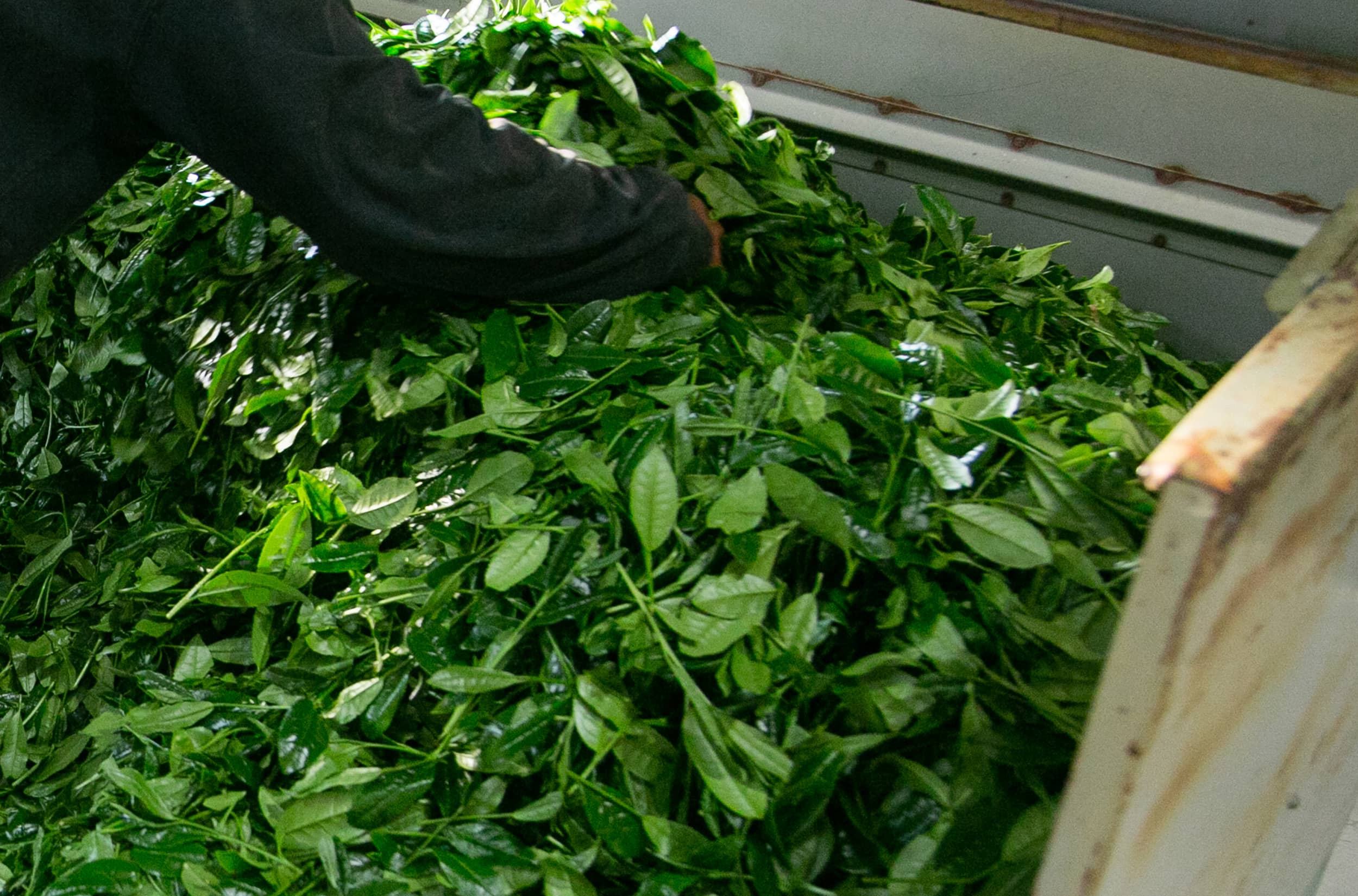
Automatic Feeding
The collected tea leaves are loosened and automatically sent to the steamer evenly to prevent clogging in the next process.
Steaming
In order to stop the activity of the oxidase in the raw leaves, the tea leaves are heated with steam and steamed.The steaming time is slightly shorter than that of normal sencha, and the tea leaves are steamed in about 20 seconds. The clear color and aroma of the tea are brought out by steaming it. If you want to darken the ground color of matcha, take longer steaming time.
Check of the Steaming
This is a very important process because the time of steaming and how the steam is applied affects the taste, aroma, and color of the finished product. It is a work that requires a sense of skill because the buds are different depending on the climate from year to year.
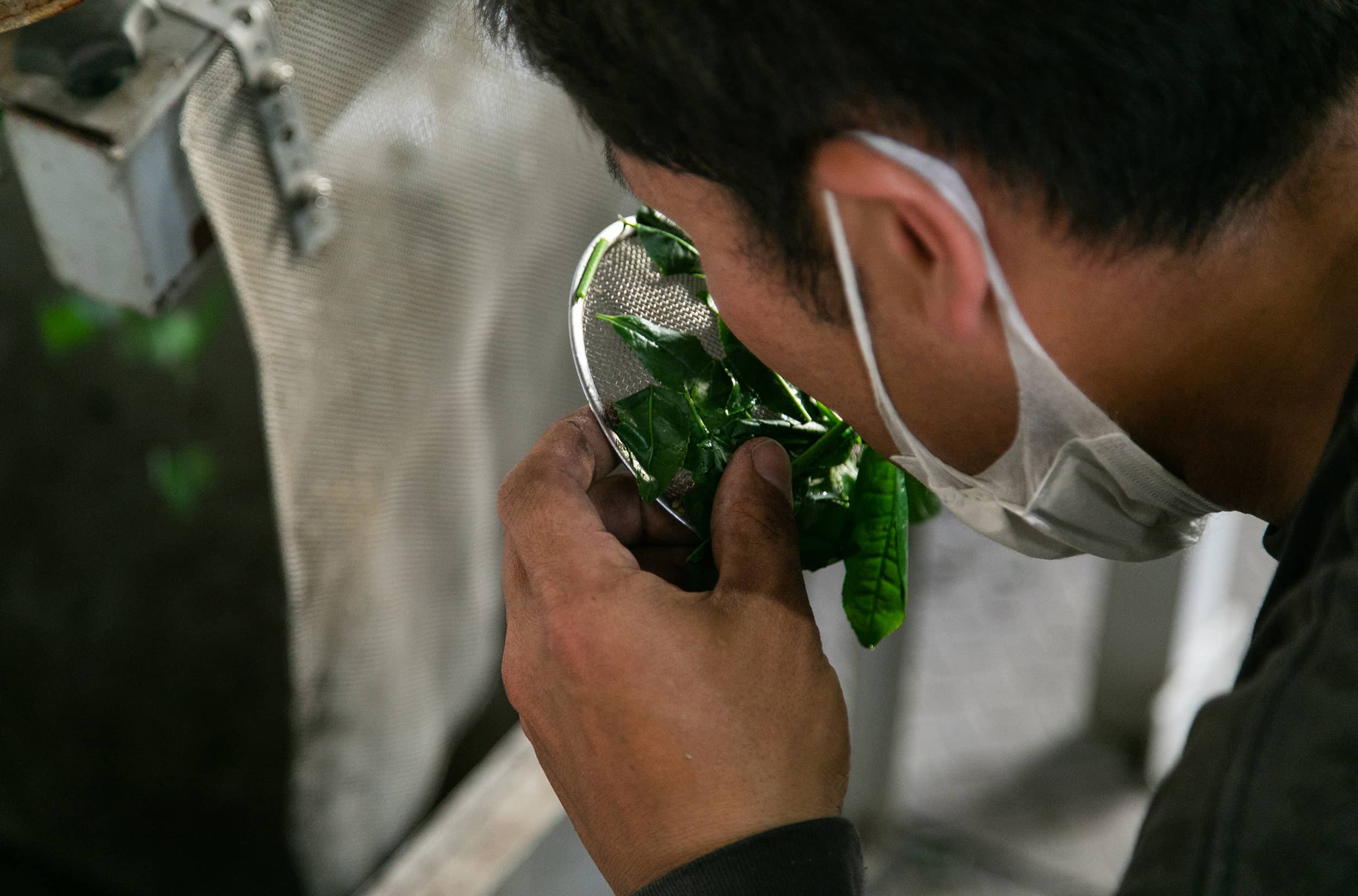
Cooling
A 5-7m tall 'andon', a net-covered tea spreader for cooling, uses wind power to blow up the tea leaves inside. The tea leaves are blown up, down, into the next room, blown up again, and so on until they have passed all the rooms. The tea leaves are cooled while being blown up, spread out so that the steamed leaves do not overlap each other, and finally land on the caterpillar at the bottom of the tencha furnace.
Drying [The tencha-ro]
Tencha-ro is a huge brick oven about 10 meters long. Inside the room, the tea leaves are conveyed by caterpillars with 3 to 5 layers and dried with hot air at a room temperature of 170 to 200°C for about 30 minutes. At first, it is rapidly dried at the bottom (rough drying), and then it is gradually blown up to the top floor and descends in sequence (main drying).
Cutting / Sorting
A machine called tsurugiri is used to cut off the stems from the tea leaves. In addition, hard leaves and remaining stems are sorted out, only good quality leaves are collected, and cut to a certain length. Sorted into buds and stems and dried again.
Bagging / Shipping
The unrefined tea thus produced is packed into bags, and the leaves and stems are each processed by a tea wholesaler. The finished tea of tencha is processed into matcha, and the stems are processed into roasted tea.
